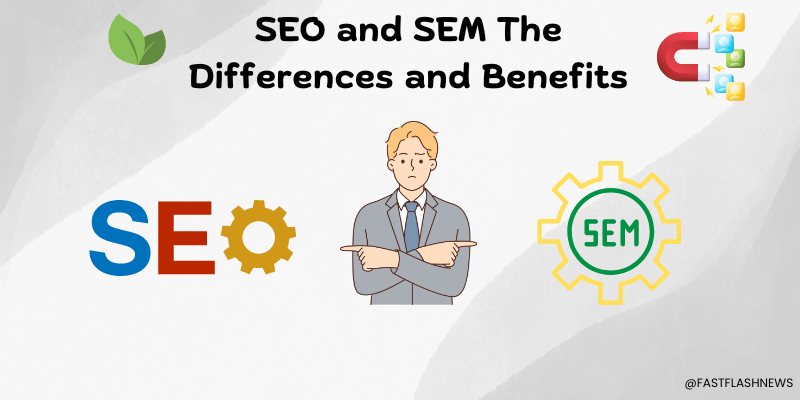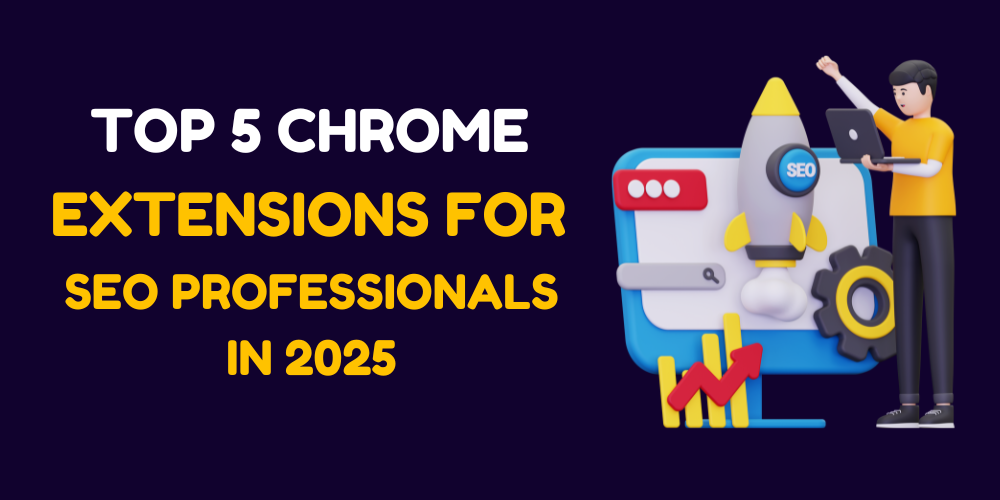In the field of Digital marketing, two phrases frequently appear, SEO and SEM. but they work in different ways and serve different functions.
Both are essential for increasing your website’s exposure in search engines. Let’s look at the distinctions between SEO and SEM, their advantages, and how you may utilize them to improve your online presence.
What is SEO?
SEO, or Search Engine Optimization, is the practice of making your website rank better in organic (non-paid) search results. The fundamental purpose of SEO is to increase traffic to your website by boosting its exposure in search engines such as Google, Bing, and Yahoo. SEO uses a variety of tactics, including:
On-Page SEO is optimizing individual web pages with relevant keywords, meta descriptions, title tags, and high-quality content to make them more search engine friendly.
Off-Page SEO is obtaining backlinks from other respectable websites in order to boost your site’s reputation and trustworthiness.
Technical SEO focuses on increasing your website’s technical elements, such as speed, mobile friendliness, and secure connections (HTTPS).
Benefits of SEO
Cost-Effective: Unlike paid advertising, SEO focuses on organic traffic, making it a more cost-effective strategy over time.
SEO gives long-term results. Once your site starts ranking high, it may continue to draw visitors without incurring further costs.
Increased Credibility: High search rankings can help your website gain credibility and reliability in the eyes of users.
Better User Experience: SEO promotes the construction of high-quality, relevant content and a well-structured website, therefore improving the entire user experience.
What is SEM?
SEM, or Search Engine Marketing, is a wide phrase that refers to a variety of paid tactics for increasing your website’s exposure in search engines. The most frequent type of SEM is PPC (Pay-Per-Click) advertising, in which advertisers are charged a fee each time their ad is clicked. SEM tactics include:
Google Ads: Creating and managing advertisements that display in Google search results pages.
Bing Ads are similar to Google Ads, but for the Bing search engine.
Display advertising is placing banner adverts on multiple websites to attract traffic.
Benefits of SEM
Immediate Results: Unlike SEO, which can take months to provide results, SEM can generate visitors practically immediately after your advertisements are published.
Targeted Advertising: SEM enables you to target certain demographics, geographies, and user behaviors, ensuring that your advertisements reach the intended audience.
Scalability: You may quickly alter your ad budget and campaigns to reflect performance and company demands.
Enhanced exposure: SEM may greatly boost your website’s exposure in search engines, particularly for competitive keywords where organic ranks are difficult to obtain.
Key Differences Between SEO and SEM
Cost: SEO focuses on organic traffic and is often more cost-effective over time, whereas SEM requires regular payments for sponsored ads.
Timeframe: SEO takes time to develop and demonstrate results, however SEM may provide quick traffic and visibility.
Sustainability: SEO provides long-term advantages and consistent visitor growth, but SEM requires ongoing expenditure to retain presence.
Click-Through Rate (CTR): Organic results often have greater CTRs than sponsored advertisements because people trust organic listings more.
Combining SEO and SEM
Combining SEO and SEM may significantly improve digital marketing results. Here’s how you can mix the two techniques.
Keyword Research: Use information from your SEM efforts to help you develop your SEO keyword strategy. High-performing paid keywords can also be targeted organically.
Testing: Before implementing new keywords and ad copy into your SEO plan, use SEM to assess their efficacy.
Comprehensive Coverage: Using both SEO and SEM, you may dominate search engine results pages (SERPs) by appearing in both organic and sponsored listings.
Data Analysis: Use data from both SEO and SEM campaigns to better understand user behavior, optimize targeting, and fine-tune your entire marketing approach.
SEO and SEM are both critical components of an effective digital marketing plan. While SEO emphasizes organic traffic and long-term growth, SEM provides rapid visibility and targeted advertising options. Understanding the distinctions and benefits of each, as well as efficiently combining them, will allow you to increase the visibility of your website, generate more visitors, and achieve your business objectives.
FAQ’s
What is SEO?
SEO, or Search Engine Optimization, is the practice of optimizing a website to improve its ranking in organic (non-paid) search engine results. It involves techniques such as keyword optimization, content creation, and technical improvements to increase visibility and attract more visitors.
What is SEM?
SEM, or Search Engine Marketing, is a broader digital marketing strategy that includes both paid advertising (such as Pay-Per-Click, or PPC) and SEO to increase a website’s visibility on search engines. The most common form of SEM is PPC advertising.
What are the main differences between SEO and SEM?
The primary difference is that SEO focuses on organic search results, while SEM includes both organic and paid search results. SEO is a long-term strategy aimed at improving organic rankings, whereas SEM provides immediate visibility through paid ads.
Which strategy should I choose, SEO or SEM?
It depends on your business goals. If you need immediate traffic and have a budget for ads, SEM is beneficial. For long-term growth and cost-effective traffic, SEO is the way to go. Ideally, integrating both strategies can provide the best results.





Your article helped me a lot, Thanks!